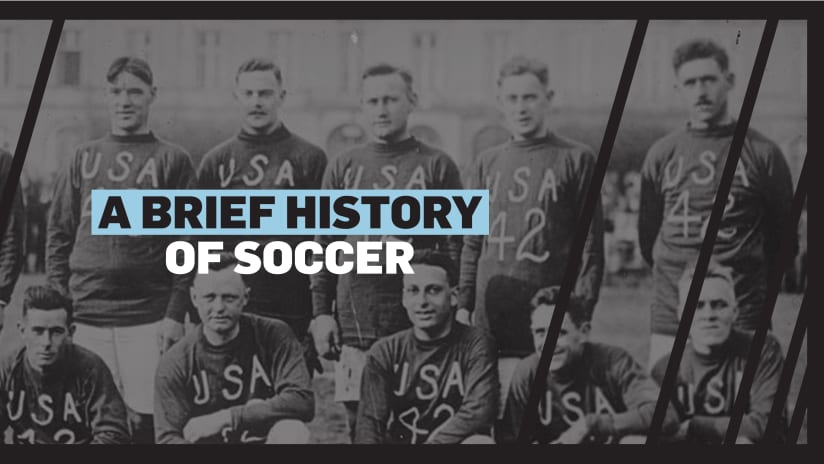Since we’ve got a bit of time on our hands with the MLS season suspended, we thought it would be a good time to relax, have a little fun and stretch out a bit with some posts beyond the usual recaps, preview and interviews. Now's a good time to brush up a bit on your soccer history.
Soccer as it’s played today traces its roots back to the Cambridge Rules of 1863. In English schools at the time, teams played a primordial version of the game that sometimes allowed the use of hands and defined offside in haphazard ways. Earlier efforts to codify the rules had been made, but the 1863 rules were picked up by the newly-formed Football Association, the organization that to this day runs England’s FA Cup. The term “association football” was coined to distinguish it from established games like rugby football, and the term “soccer” — a shortening of “one who plays association football”— was coined in the late 19th century, for the record, in the UK.
As the game established a popular foothold in England, other countries iterated and innovated. One of the first major innovations in the game came from Scotland, where they had the bright idea to pass the ball a lot more. Again, soccer evolved from rugby, so the early British game involved a lot more possession and plowing forward by the player with the ball. When English schools came up against Scottish ones early on, they looked upon passing as unbecoming and not in the spirit of the game. But once they got sliced to ribbons by the Scots’ passing, they changed their tune.
Defense was also played quite differently in the early game — or often not at all — with formations that had one defender, one or two midfielders and seven or eight forwards. Despite 14 forwards being in the pitch, the first international soccer game on November 30, 1872 between England and Scotland ended in a 0-0 draw. It was not quite the beautiful game we’ve come to know and love.
These evolutions continued steadily over the next century and a half, with new formations and strategies being explored and tested. When the game was exported to South America, players there used the spaces they had and became adept at dribbling through tight, urban areas. Slowly, countless tactical wrinkles would be introduced, from Italian sweepers protecting the face of goal to the Total Football of the Dutch where players would switch roles as needed in attack or defense.
Part of soccer’s broad appeal comes from its flexibility, which in turn comes from its simplicity. While the rules have certainly evolved since 1863, the fundamentals have endured: two teams, a ball, no using your hands, and a goal to put the ball through. All the myriad ways that coaches and players have built upon that foundation and then remodeled it over the decades have sustained and will continue to sustain the sport.





